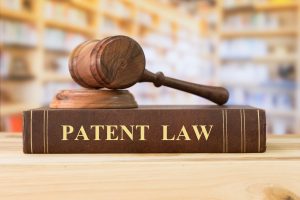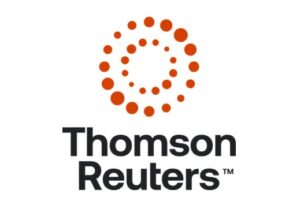Is It Halftime Yet?
When it comes to IP cases, what is obvious to lawyers is not necessarily so clear to their clients or other interested parties in the outcome of a litigation.
 When it comes to patent cases, trials are definitely not the final word. As a group, lawyers get that, especially lawyers that practice patent litigation. In-house or outside counsel, it does not matter. Even non-patent litigators appreciate the importance of appellate review to the disposition of cases. And are likely at least aware of the outsized role that the Federal Circuit plays in bringing finality to patent matters.
When it comes to patent cases, trials are definitely not the final word. As a group, lawyers get that, especially lawyers that practice patent litigation. In-house or outside counsel, it does not matter. Even non-patent litigators appreciate the importance of appellate review to the disposition of cases. And are likely at least aware of the outsized role that the Federal Circuit plays in bringing finality to patent matters.
But what is obvious to lawyers is not necessarily so clear to their clients or other interested parties in the outcome of a litigation. Non-legal personnel at your typical company will often overestimate the importance of a trial result to the resolution of a patent dispute. Likewise, investors with a financial interest in the outcome of a case, whether direct or indirect, will also often assume that a trial result brings a measure of certainty to identification of the victor. In my experience, even sophisticated investors can find themselves a bit unsure of how to gauge the impact of a trial result on a given investment thesis. The smart ones, of course, ask for help in that regard. Other investors, however, may wrongly overestimate the impact of the verdict, both with respect to the short-term settlement prospects post-trial, as well as with respect to the resiliency of the verdict on post-trial motions or appeal.
In fact, when I speak to investors about a given patent trial and its impact, I sometimes find myself trying to illustrate what I think is a more accurate reflection of a trial’s place in the patent litigation lifecycle using a sports analogy. As a formerly invested and now indifferent Knicks fan — and no, I can’t embrace the Brooklyn Nets, even though I have tried — my go-to analogy is to a basketball game. And I tell people that a patent trial is effectively halftime in the process towards a full resolution of the dispute on the merits. One can reasonably disagree with that characterization of course, but I feel that for an audience that is less schooled on the nuances of patent litigation, the impact of hearing that a case is a long way from over is a good framing point for allowing them to develop an understanding that there is can be a long way to go before final resolution. Which then usually leads into a discussion of what the appeal process looks like, along with a discussion of the risks involved for both sides once a case progresses to appeal.

The Questions To Make Digital Vaults Your Competitive Advantage

An ongoing case that has drawn investor interest provides a good example of a patent dispute where a jury verdict is at best a midway point. In fact, I profiled the filing of the case on these pages back in July 2021. That column discussed Seagen’s success in having its royalty-seeking patent case against Daichii Sankyo’s blockbuster cancer drug Enhertu remain venued in East Texas, a critical step towards Seagen getting the case to trial in a short period of time. Seagen was successful in getting the case before a jury, scoring a $41 million-plus verdict just about a month ago on its infringement claim. That verdict, which is estimated to reflect a 7.5% royalty on Enhurtu sales, included a finding of willfulness by the jury. Not a bad starting point for a patent holder to work from.
That success in hand, Seagen has already asked for an expedited post-trial briefing schedule, hoping as it likely does that it can get to a judgment including enhanced damages in short order. Likewise, Seagen hopes to build on the impact of the verdict with additional success in the pending arbitration it has with Daichii as well. At the same time, any joy securing the jury verdict was tempered by the midtrial announcement that the USPTO had agreed to resurrect Daichii’s PGR petitions attacking Seagen’s ‘039 Patent. Now that we are in the post-trial phase, Daichii is attempting to use that upcoming PGR process as a basis for staying the other post-trial proceedings in the case.
In short, around the fulcrum of the jury trial and verdict we now have both parties attempting to torque the court’s handling of the case going forward in their desired direction. For Seagen, the priority is on getting to final judgment in the EDTX case as quickly as possible, ideally with enhanced damages going forward — predicated perhaps on Daichii’s litigation misconduct that led to a pretrial monetary discovery sanction, as well as the jury’s finding of willful infringement. Yes, that result still means that Seagen faces the uncertainty of the PGR process and Federal Circuit review of the EDTX proceedings. But in terms of short-term settlement leverage, especially if coupled with a favorable arbitration result, Seagen would be in a strong position.
In contrast, Daichii is hoping to delay a finding of enhanced damages by the court in EDTX, so that Seagen’s settlement expectations remain tethered to the lower royalty range set by the jury. Likewise, Daichii hopes that if the EDTX court stays the case pending the PGR, the time and result risk that would result would weaken Seagen’s settlement strength in the near-term, while also reducing the potential impact of an interim arbitration award going against Daichii.
Sponsored

CoCounsel: The legal AI Assistant And Tool Essential For Legal Teams


Lawyers Have The Power To Protect The Vote This Election Season

Learn How To Make A Difference For Survivors Of Intimate Partner Violence

How Thomson Reuters Supercharged CoCounsel With Gen AI Advances

Ultimately, this fascinating dispute between former pharma collaborators illustrates the challenges posed by modern patent litigation. Whether it be the interplay between various fora clouding the ability to get a transparent view of how the case would play out on the merits or because the simple fact remains that a trial result is best considered incremental rather than final — the jockeying for settlement positioning post-trial seen between Seagena and Daichii is expected. That jockeying also inherently introduces risk in terms of trying to handicap the ultimate outcome of the dispute. For Seagen and Daichii, it definitely feels like we are nowhere close to a resolution of the various adversarial legal proceedings absent a global settlement. Accordingly, for investors and interested observers, it is safe to ask — are we at halftime yet?
Please feel free to send comments or questions to me at [email protected] or via Twitter: @gkroub. Any topic suggestions or thoughts are most welcome.
Gaston Kroub lives in Brooklyn and is a founding partner of Kroub, Silbersher & Kolmykov PLLC, an intellectual property litigation boutique, and Markman Advisors LLC, a leading consultancy on patent issues for the investment community. Gaston’s practice focuses on intellectual property litigation and related counseling, with a strong focus on patent matters. You can reach him at [email protected] or follow him on Twitter: @gkroub.
Sponsored

The Questions To Make Digital Vaults Your Competitive Advantage









